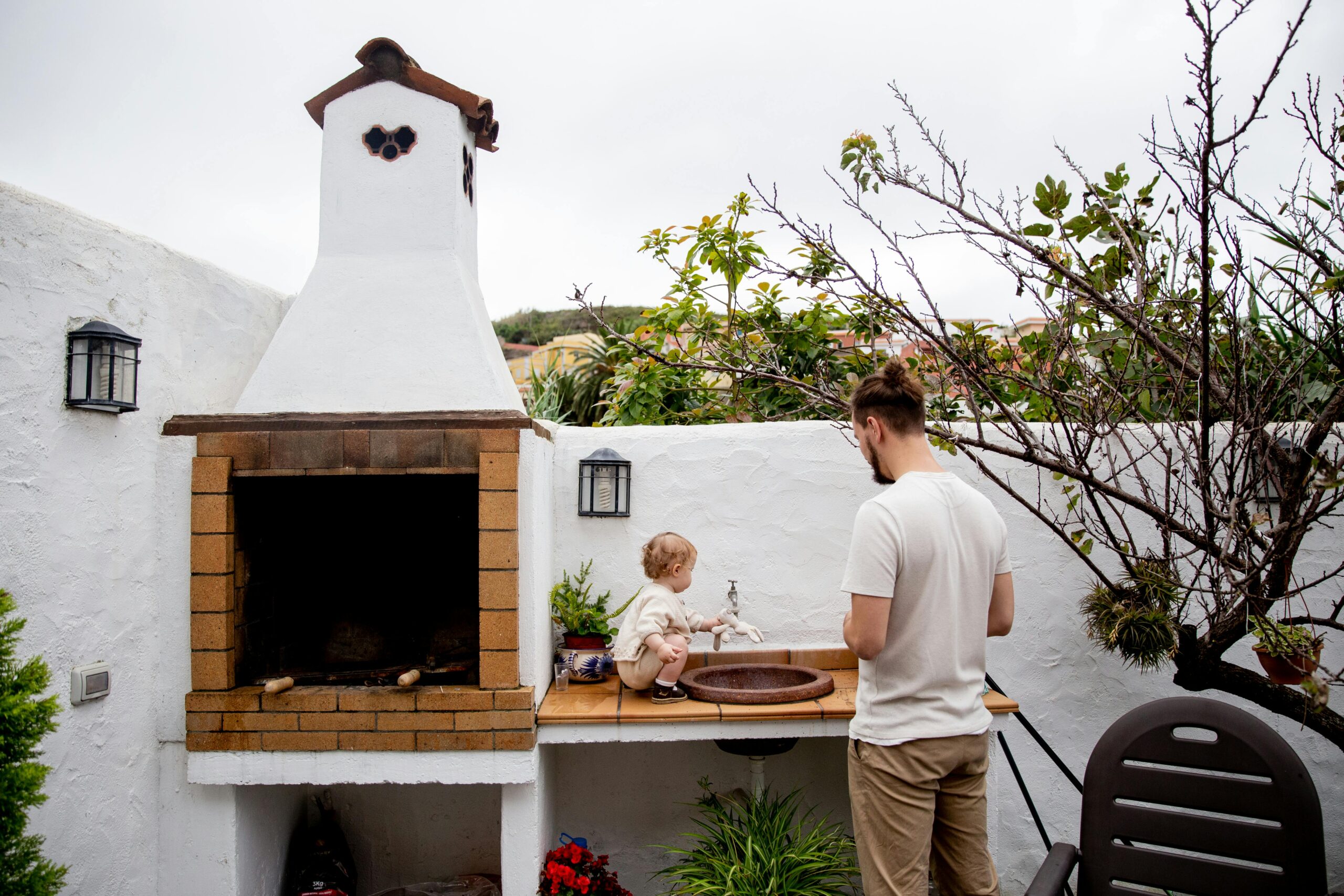Creating an outdoor kitchen transforms your backyard into an entertainment hub while extending your living space. This comprehensive guide explores the essential components for a functional outdoor cooking area, from high-quality grills to durable countertops. We’ll also examine layout considerations for maximizing flow and efficiency, material options that withstand the elements, and realistic budget planning to help you create an outdoor culinary space that meets your lifestyle needs and financial parameters.
Understanding Outdoor Kitchen Essentials
The foundation of any successful outdoor kitchen begins with identifying the essential components that align with your cooking style and entertainment needs. A quality grill is at the heart of most outdoor kitchen design ideas, whether you prefer gas, charcoal, or a hybrid model. Beyond the cooking apparatus, adequate countertop space becomes crucial for food preparation and serving. A sink with running water significantly enhances functionality by eliminating trips indoors for washing hands or rinsing ingredients. Many homeowners also incorporate refrigeration units to keep beverages and ingredients cold. Thoughtfully selecting these outdoor kitchen essentials establishes a solid foundation for your culinary retreat and ensures you’ll enjoy the space for years.
Considerations for Optimal Flow
The layout of your outdoor kitchen directly impacts its usability and convenience. Professional designers recommend following the “work triangle” concept commonly used in indoor kitchens, which positions the grill, sink, and refrigerator in an efficient arrangement. When drafting outdoor BBQ island plans, consider the surrounding environment, including views, prevailing winds, and proximity to your indoor kitchen. An L-shaped or U-shaped design often maximizes space utilization while creating distinct zones for cooking, preparation, and gathering. Additionally, adequate seating arrangements should be incorporated to encourage conversation while allowing the cook to remain engaged with guests. As noted by outdoor living experts at AskHomey, proper spacing between components prevents congestion and enhances the overall cooking experience in your outdoor space.
Selecting Weather-Resistant Materials
The materials used in your outdoor kitchen must withstand exposure to sun, rain, temperature fluctuations, and potentially harsh weather conditions. Natural stone options like granite remain popular for countertops for their durability and heat resistance, though concrete, tile, and specially formulated outdoor-rated quartz offer attractive alternatives. Cabinetry requires careful consideration, with stainless steel and marine-grade polymer units providing excellent resistance to moisture and temperature changes. Flooring materials, including textured concrete, natural stone pavers, and composite decking, should offer slip resistance when wet. These material choices significantly impact your outdoor kitchen’s aesthetic appeal and longevity, making them crucial decisions in the planning process.
Utilities and Infrastructure Requirements
Creating a functional outdoor kitchen requires careful planning of utilities beyond just the visible components. Water lines must be properly installed with adequate drainage systems and winterization capabilities in colder climates. Gas lines need professional installation with appropriate safety measures. Electrical needs include weatherproof outlets, proper lighting for evening cooking, and circuits that can handle multiple appliances. Additionally, consider ventilation requirements, especially if your outdoor kitchen consists of or is positioned near the house. These infrastructure elements represent a significant portion of the build-outside kitchen cost but are essential for safety, functionality, and compliance with local building codes.
Budget Planning and Cost Considerations
Establishing a realistic budget is perhaps the most critical step in planning your outdoor kitchen. Build outdoor kitchen costs vary dramatically based on size, materials, and complexity, with basic setups starting around $5,000 and elaborate installations potentially exceeding $50,000. The grill typically represents the largest and most significant expense, with high-end models costing several thousand dollars. Depending on material and square footage, countertops contribute significantly to the overall cost. Additionally, factor in expenses for utility installation, which can be substantial if gas, water, or electrical lines need extensive work. Many homeowners succeed in phasing their projects, starting with core cooking components and adding features over time. This approach allows for spreading costs while creating a functional space.
Maintenance and Seasonal Considerations
A well-planned outdoor kitchen should include considerations for ongoing maintenance and seasonal care. Select materials and components that align with your willingness to perform regular upkeep. Covers for grills and furniture protect investments during harsh weather, while proper winterization of water lines prevents costly damage in freezing temperatures. Consider how your climate affects material choices—regions with frequent freeze-thaw cycles require more durable materials, while coastal areas benefit from corrosion-resistant options. Incorporating these maintenance considerations during the planning phase ensures your outdoor kitchen remains beautiful and functional for many seasons of enjoyment.
For more tips and to connect with reliable home service professionals, follow AskHomey on Facebook and Instagram.



